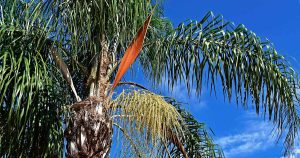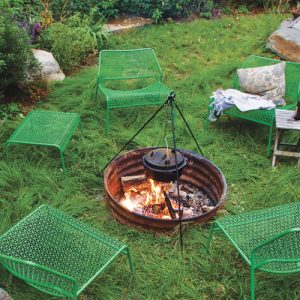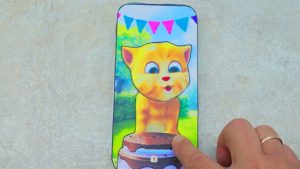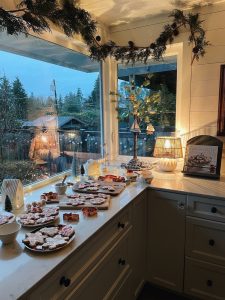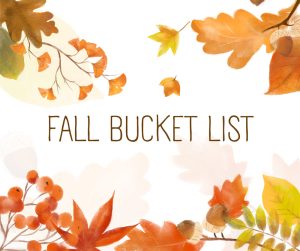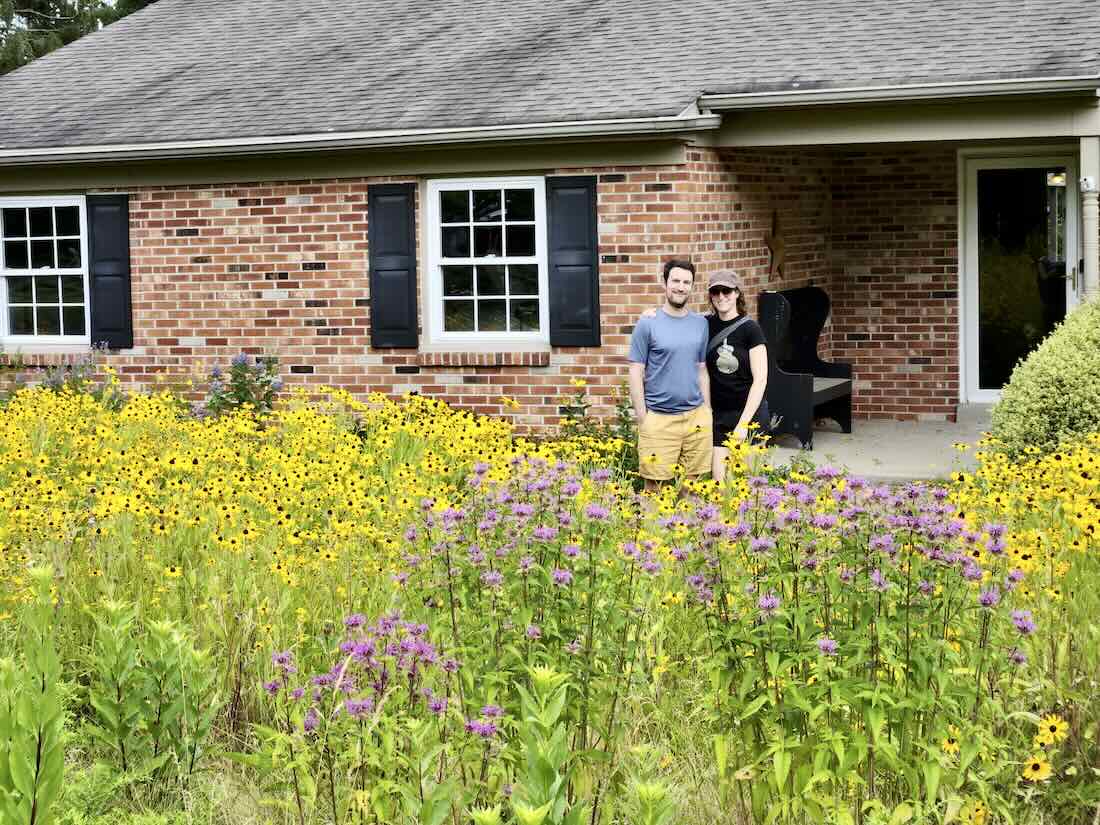
SARA WEANER COOPER and her husband, Evan Cooper, bought their first home a couple of years ago, and before long, undertook transitioning the front lawn organically from mown grass into a meadow. In a recent conversation, Sara told me about their hands-on adventure, and all the how-to steps, including the importance of communicating your intentions to your neighbors along the way.
Sara, who has her bachelor’s and master’s degrees in anthropology and education, is executive director of New Directions in the American Landscape, an educational organization founded by her father, the renowned ecological landscape designer Larry Weaner, that promotes ecology-based landscape design and practice. There, she develops and coordinates educational programs geared to both professional and lay audiences. She and her husband, Evan Cooper, live in Blue Bell, Pa.
Read along as you listen to the Oct. 21, 2024 edition of my public-radio show and podcast using the player below. You can subscribe to all future editions on Apple Podcasts (iTunes) or Spotify (and browse my archive of podcasts here).

a front-yard meadow, with sara weaner cooper
Margaret Roach: We did a “New York Times” column together that was so popular, lots and lots and lots of comments. People loved your front lawn, so that was fun [laughter]. Before we get started on talking about that transition project, tell us a little bit about what New Directions in the American Landscape—is it NDAL, the acronym name? How do you refer to it?
Sara Weaner Cooper: Yeah, it’s funny because it’s New Directions in the American Landscape, but it’s a mouthful, so I usually say N-D-A-L. A lot of people do say N-DAL. It’s up to the individual.
Margaret: So it’s not just me who’s confused [laughter].
Sara: No, not all.
Margaret: Tell us about it. What does it do? What’s its purpose? Your father, as I said, he’s a designer, a long-time designer, an important figure in the ecological landscape movement, and he has a practice of designing landscapes. This is not his landscape design practice; this is an educational organization.
Sara: It’s the educational arm of his landscape-design firm, but it’s pretty much sole mission is to educate on ecology-based landscape design. It originated from his desire to get more of that ecology and really, plant-focused information into his kind of mindset when he was starting out 30-plus years ago. I think he was just really interested in finding more people that he could learn from, so he started a conference, an annual conference, that we now call the annual symposium, which is in its 36th year coming up.
Margaret: Wow.
Sara: Which is crazy. It was basically to pull together all different people from different disciplines, landscape designers and architects, but also horticulturists, ecologists, anthropologists, to really broaden and enrich the field that he felt was lacking in conventional landscape design. That’s been the origin story.
And now, since I joined in 2019, I have helped expand it to also virtual programming, because of COVID, but we’ve kept that going. But then, we’ve been able to hold more in-person programs that are more intensive, for landscape professionals, and then hopefully, some in-person programs for home gardeners.
Margaret: You are trying to expand the home-gardener offerings, and I know you have some coming up soon. Your father’s translating his home gardener intensive, which is your classic course, a multi-session course, he’s sort of translating that for the lay person as well, and I think that’s in December. I think you’re doing a webinar coming up, what, Nov. 21, about your home front yard project?
Sara: Yeah, exactly. I’m going to present on that whole process on Nov. 21. And yes, just like you said, the December course is basically a shortened and condensed, more digestible for the layperson, intensive course that will go over foundations of ecology-based design as well as planting and management. I’ll have a little tiny chunk in there to describe my front-yard project, too, but that was obviously orchestrated and guided by my dad.
Margaret: Because it is very different, I mean, being a longtime gardener and then, in recent years, learning more and more and more about ecologically based design and so forth from experts that I interview, there’s a lot of questions. Homeowners, no big surprise, even those who have gardened a long time, are sometimes surprised by some of the differences [laughter] in the prep, in the aftercare, obviously, in the plant palette and so forth. It’s a new world for a lot of people, even long time gardeners, so it’s great that you’re offering more and more of those educational opportunities.
Speaking of a learning experience [laughter], you and Evan, your husband, have had one, I think-
Sara: Oh, yeah.
Margaret: …since you got your house a couple of years ago, and you decided you wanted to transition the front yard, and you decided to do it yourselves, it looked like, anyway. That’s what we talked about, you were renting machinery and doing the steps, and learning along the way.
It seems like there were a few things that were on your mind when you made the decision, you guys made the decision. One is that you were new to the community of Blue Bell, Pa., you wanted to be a good neighbor, and the other is that you wanted to be organic. Tell us a little bit about the start, and the prep and so forth, how it directed the prep and so forth, those desires.
Sara: I pretty much had grown tired of mowing our lawn one to two times per week in the spring and summer, and knew that we were going to do something different with the landscape eventually. At that point, I was just like, “Let’s get this started sooner rather than later.” We had a little design meeting, or basically, initial site meeting with my dad, and he laid out the options that he typically, or LWLA might typically do, Larry Weaner Landscape Associates. There would be killing the lawn with herbicide, or manually removing it, ripping it out.
Margaret: A sod stripper, or smothering it, so to speak, solarizing it to death or something, one of those.
Sara: Right.
Margaret: Zeroing it out one way or the other, chemically or physically?
Sara: Exactly, like a “blank slate.” One was herbicide, which I was trying to avoid, and the other was pretty labor-intensive, and both would result in a brown front yard for a while. And so I was just like, “Is there any other way? Is there something else we can do?”
He said, “Well, it’s going to be trickier, and it’ll take longer, but we could seed and plant directly into the existing turfgrass, and then just try to exploit the differences in the way that each of them grow and exist in the landscape to weaken the turfgrass and strengthen the native plants.”
And I was like, “Let’s do it.” [Laughter.]

Margaret: What are some of the things that you used in preparation to weaken the turf grass, to make the new home more receptive for the seeds and the little landscape plugs that I assume you were going to insert?
Sara: Yes, the first step was that we applied sulfur. We basically just got a bag of sulfur from the local garden center and mixed it in with hamster bedding, so that it would spread throughout the whole front yard of 5,000 square feet. That was meant to lower the pH, make it more acidic, which ultimately, binds nutrients to the soil, and therefore, they’re less available to the plants. The turfgrass needs more fertility, and the meadow needs less, and therefore, the meadow plants would benefit from that. That was the first step in preparing the site, and we did that repeatedly. We’ve done that repeatedly over the last two years, every few months. [Above, Evan Cooper tossing sulfur mixed in hamster bedding onto the former lawn areas.]
Margaret: So it’s a pH-lowering tactic using a natural element, sulfur, in hamster bedding, which is a wood-shaving product, I think, right? Something like that.
Sara: Yeah, no coloration, just natural.
Margaret: Yeah, so that’s one thing. O.K.
Sara: Right, and that contrasts with what many already know of, which is lime as a way to help turfgrass, which does the opposite in raising pH.
Margaret: Right, I see. O.K.

Sara: And then, the next step was to de-thatch, or use a power rake that we rented, like you said, which was meant to disturb the shallow roots of the turfgrass, weaken it, make it so that the sun could get more to the soil where we were eventually going to seed. That was the second step, the dethatching [above].
Margaret: It’s a walk-behind, but it’s quite a hefty machine. Is that a walk-behind rental machine that you get at a big box store, maybe rent at Home Depot or something like that?
Sara: Yeah, exactly. We rented it from Home Depot. It was a few hour rental kind of thing. We also did have to rent a pickup truck just to get it to our house [laughter].
Margaret: I would think, because not a small thing. It’s a little heavy.
Sara: Yes, and I was thankful that Evan was happy to do the manual part of that. I think it’s self-propelled, don’t quote me on that, so he did have some assistance from the machine itself, but it’s cumbersome.
Margaret: It’s a dethatcher/power rake, so it doesn’t completely pull out all the grass or anything, but it loosens things up, make some entry points for your seeds and so forth.
Sara: Right, just a light disturbance, not heavy.
Margaret: Those were two of the ways to try to give an advantage to what was coming, the desired meadow seeds and plants.
Sara: I think that dethatching was key, and we did it twice. We did it once before planting our live plants in the fall, and then again before seeding in the winter. Really, the purpose of it was to help those seeded plants.
That was the prep, and the third key tactic in helping the turfgrass was the mowing, which came along, obviously, in spring, when the grass was growing back in. I would mow it as short as I can, or even scalp-mow it, use the weed whip to get it really down to the bare soil, so that those seeds could really have a chance. And then, once the turfgrass was growing in, I would mow it with my electric mower that has different height settings, which were really helpful. I can go really, really low with that thing, and also really, really high, which is great.
Margaret: Here you are, you’re fairly new in the neighborhood, and you two are out there with all these strange gizmos and whatever [laughter]. I know you communicated to the neighbors. Did people start asking? How did you communicate to the neighbors about what was going to go on?
Sara: Immediately, I knew I wanted to have a sign, because it was going to look, to some extent, messy for a little while. So I put a sign out that said, “Native meadow in progress,” and had a little picture of what it could look like, similar to what it could look like. Then, whenever I’d see my neighbors, we just had conversations about it, about what it was going to be and what our intentions were, and how it’ll be lower maintenance. I remember telling someone, she said, “Yes, O.K., it’s probably going to take a couple of years to really fully come in, and establish as you’re intending it to look.”
I was like, “Yes, a couple of years,” but with the live plants blooming that first summer, it was still really nice to look at, I think.
Margaret: You did seed, and you did live plants. Did you group some live plants in clustered areas or something, in order to have some show right away? What was the point of the mix of seeds and live plants?
 Sara: The first design that my dad did was four isolated drifts, which were just chunks that we planted the live plants in, all mixed together within each isolated drift. That would be where we would mow around, and the seed was put everywhere. What we call the main meadow are all the places outside the drifts, if that makes sense.
Sara: The first design that my dad did was four isolated drifts, which were just chunks that we planted the live plants in, all mixed together within each isolated drift. That would be where we would mow around, and the seed was put everywhere. What we call the main meadow are all the places outside the drifts, if that makes sense.
Margaret: Yeah, and then you could continue to use that, like you said, the variable height on your mower and stuff like that, to mow around things, and look for things to come up, and I guess use the weed whip, too, in some places, so you could really edit but work around the desirable versus the undesirable and so forth, as it all evolved. The drifts are a good idea, because if it’s all seed, it’s going to be a much longer process, so that does give you… were there some plants you knew you wanted, or that your father said, “Oh, you really should have this?” I assume it’s a mixture of grasses and forbs, or flowering perennials that aren’t grasses, yes?
Sara: Yes, the grasses, we haven’t yet planted. We were going to do little bluestem, I think in this coming spring, but so far, perennials were live plants. And then, there was a biennial, the black-eyed Susan, that came in really thick the second year. The seed mix, I think a lot of it was going to be shorter-lived; a lot of them were coming up quickly. The Coreopsis, or the tickseed is the common name, that came up really thick this year, but I think that it’s going to evolve over time, where the seeded plants, some of them will kind of lessen over the years.
Margaret: Yeah, and I think that’s really one of the big important points. I get a lot of questions whenever I interview somebody or whatever, or write about it in the Times and get comments. A lot of the questions are around, “I planted thus and such, and then by Year 3, I didn’t have any more of that plant. My black-eyed Susans were gone,” or like you say, “The Coreopsis was gone, something was gone.”
They are lamenting because they thought the “picture,” so to speak, that they saw earlier, that it was going to, in a way, stay that way. I always use the comparison, for experienced gardeners, in the way that if you plant a bunch of hostas in a place, 30 years later, they’re still going to be in that place [laughter], but it’s not the same with these types of very dynamic mixes of grassland species and meadow or prairie or whatever we want to call them, savanna species. They ebb and flow according to, as you were just tinting at, some of them are annuals, some are biennials. Those are shorter lifespans than the perennials that will then establish and take over more turf, literally. The picture changes, doesn’t it?
Sara: Yeah, and that’s a big shift in mindset, I think, for a lot of us, because of exactly the idea that it should just be static, a static landscape based on what I put in initially, but no, and it’s so much more rewarding this way. You’re able to work with it over time, and see how it’s changing, and what’s coming in more thickly in certain areas, and why. I think that’s so much more fun, and rewarding. I think that’s been exciting, now that we’re going into the third blooming year.
Margaret: Are you already editing, so to speak, weeding? I don’t know what word we should use, but are you already kind of editing some things out? Did weeds appear that are leftovers from the former lawn? What about that? That would seem to me to be another step, so to speak, that we have to learn to do if we tackle something like this.
Sara: It really hasn’t been super-weedy, because all the seeded and live plants are so thickly growing already. I’d say probably the worst weed right now is still the turfgrass [laughter], but it’s definitely way thinner this summer than last. I think the worst weed I’ve seen is multiflora rose, which is really just a tiny chunk. I’m trying to get it really early. I’m trying to just catch, really, the ones that will come in and take over if nothing were done. I’m trying to catch those, but otherwise, like dandelions, or I’m trying to think of other things that weren’t a concern.
Margaret: When you say not a concern, because you figure that this other thick planting is eventually going to crowd it all out, a dandelion out and so forth, so you’re not really worried about seeing a dandelion here and there?
Sara: Right, and there were plenty of dandelions this past spring, but then by the summer, they were all gone. We do get a lot of tree seedlings, which we just kind of pick and choose, like you say, editing. We just decide, “Maybe we’ll transplant that tree,” so that’s kind of part of the editing process, too.
Margaret: I don’t know how many years I’ve been making a meadow, and people who listen to the show regularly have heard me talk about this, but above my house, there’s a hillside, and I kind of un-mowed, I stopped mowing. I’m in a rural area, so it was not a turfgrass planted lawn. It was probably an old remnant of an agricultural field or something like that. I knew there was some little bluestem there, and I could see certain other things, some goldenrods and so forth, so I just un-mowed.
Really what happens, what unfolds in front of your eyes [laughter], you already know this, but looking to the future, it’s a whole lesson in succession, in natural succession. Like you said, you’re already seeing some woody invaders want to be there, and it’s pretty fascinating. It can be frustrating, and you don’t want the multiflora rose, or for me, I have some kind of wild blackberry-ish, raspberry-ish, Rubus species, and people get privet. It depends on what they have around them, that the birds are carrying around, especially, the seeds of. But yeah, it’s really interesting to watch.
I didn’t know, because years ago, when I began doing this, there wasn’t a lot of information on what to do to edit. You have an expert resource to turn to [laughter] in your father, you can ask him for some insights, which is great.
Sara: Definitely.
Margaret: Are you going to keep adding more plants? The seed thing is coming along, and planting thickly, I think, is a really good point. That’s one of the best sort of self-defenses against encroaching weeds. Are you going to be adding more things, or is it just a matter now of watching and editing? What’s next?
Sara: We are going to be planting a few more plants to fill in the gaps that do exist, in the drift areas mostly.
Margaret: And then, the bluestem and stuff as well?
Sara: Yeah, the little bluestem. We’re going to plant some plants this winter, like November/December, and then the bluestem in the spring. And then, I don’t know if we’ll really be planting a ton more in the coming years, or really, if it’s going to be self-sustaining. That’s a question for Larry, for my dad.
 Margaret: I know. In the beginning, you said the idea of mowing once or twice a week and so forth, that didn’t appeal, and that was part of the impetus for making this transition. What is going to be, or what is already, the mowing schedule for this type of a planting?
Margaret: I know. In the beginning, you said the idea of mowing once or twice a week and so forth, that didn’t appeal, and that was part of the impetus for making this transition. What is going to be, or what is already, the mowing schedule for this type of a planting?
Sara: It’s basically one mow a year in March, when the seedheads and everything above ground we can just mow, and then the space can be more open to the sun for what needs to grow back. A once-a-year March mow, and then, other than that, it’s really just cleanup, and making sure that it doesn’t look overgrown. I’m mowing all the paths over the course of the spring, summer, fall. I have to keep them wide enough, and clipping plants that might be drooping into the paths a little bit, things like that. It’s really not a lot of time.
Margaret: I was curious, is there a next project while this continues to evolve? Are you onto the backyard now, I think you told me? Is that something different altogether?
Sara: It is, yes. Our backyard is just starting. We took out all of the burning bushes [Euonymous alatus] that were lying in the periphery, and have kept, selectively, a couple of hollies. There’s really nice pine and shagbark hickories. Those two shagbark hickories [Carya ovata] are beautiful. It’s a little bit more wooded, but there will be little garden beds throughout, but definitely not the same as the broad meadow. It’s going to have little nooks and crannies to have seating, and I’m excited about that.
Margaret: The burning bush, boy oh boy, those things. Unbelievable.
Sara: That was tricky, because we did have a conversation with neighbors about that, too. They get so beautifully red in the fall, and people do love that. It was a decision that I felt a little bad about, just because I know people do love them, but I also know, from being in this landscape design and horticulture world, and hearing the experts talk, they’re really, really invasive, and bad for wild areas.
Margaret: Right, they not only make a thicket above ground, but their root system is apparently quite impenetrable. They take over the above- and the below-ground. They crowd out and prevent the native plants, or desired plants, native or otherwise, from getting a foothold. They’re very effective at reducing the diversity in the space they invade. Tough plants.
Sara: They are. You can see that just from having taken them out, all those roots.
Margaret: Oh, yes [laughter].
Sara: You could see that, now you’re saying it.

Margaret: Yes. I wanted to just remind people that I think you’re doing a webinar on Nov. 21. And your father’s going to do the home-gardener intensive in December, a multi-session course, and there are other offerings geared to laypeople from the New Directions in the American Landscape Organization that you work for. I’m so glad to talk to you again, and thanks again for helping me with the Times story that was so popular. I’ll look forward, I hope you’ll email me some pictures next spring, when things start to perk up again. I’m interested to see what comes in next, so thank you.
Sara: Definitely. Yeah, thank you, and I’ll just mention also, if anyone were questioning or wondering whether they’d want to commit to the full intensive in December, we’re holding a 30-minute free session with Larry on Oct. 30. That’s before the live, intensive course, so if anyone wants to get a sense of his approach, that might be helpful.
(All photos courtesy of Sara Weaner Cooper; used with permission.)
prefer the podcast version of the show?

MY WEEKLY public-radio show, rated a “top-5 garden podcast” by “The Guardian” newspaper in the UK, began its 15th year in March 2024. It’s produced at Robin Hood Radio, the smallest NPR station in the nation. Listen locally in the Hudson Valley (NY)-Berkshires (MA)-Litchfield Hills (CT) Mondays at 8:30 AM Eastern, rerun at 8:30 Saturdays. Or play the Oct. 21, 2024 show using the player near the top of this transcript. You can subscribe to all future editions on iTunes/Apple Podcasts or Spotify (and browse my archive of podcasts here).
